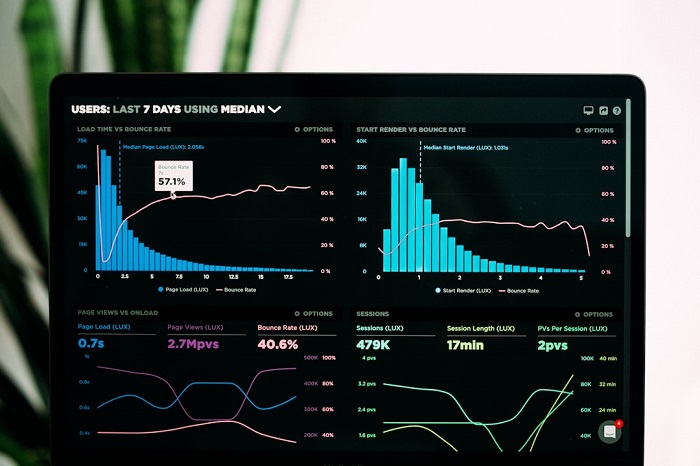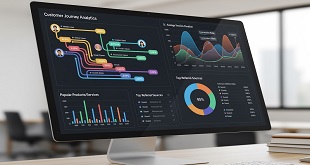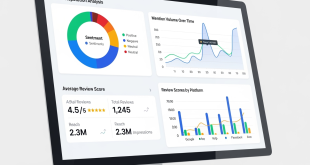Why Tracking KPIs is Essential for Profitability
 In the world of home services, simply providing excellent work isn’t enough to guarantee lasting success. We often see businesses relying on intuition, but true growth comes from clear, actionable insights. To truly thrive, we need to move beyond guesswork and accept data-driven decisions.
In the world of home services, simply providing excellent work isn’t enough to guarantee lasting success. We often see businesses relying on intuition, but true growth comes from clear, actionable insights. To truly thrive, we need to move beyond guesswork and accept data-driven decisions.
That’s where Key Performance Indicators (KPIs) come in. They are the vital signs of our business, telling us what’s working, what’s not, and where we need to adjust our strategy. Without tracking the right metrics, we’re essentially flying blind.
This guide will introduce you to the 21 most critical marketing KPIs that matter specifically for home service companies. We’ll cover everything from how much it costs to acquire a customer to how satisfied they are. By understanding these metrics, we can optimize our marketing spend, improve our services, and boost our profitability. Focusing on a holistic view of Results-driven marketing KPIs is crucial for converting efforts into actual revenue and long-term success.

In the competitive landscape of home services, relying solely on gut feelings is a recipe for stagnation. We’ve all heard the adage, “What gets measured gets improved.” This couldn’t be truer for our businesses. Tracking the right KPIs allows us to make data-driven decisions, moving us from a reactive stance to a proactive one. This strategic shift is vital for optimizing our marketing spend, identifying the most effective channels, and ultimately, improving our profitability.
Consider this: only 23 percent of marketers are confident that they track the right KPIs. This startling statistic highlights a widespread challenge. Many businesses invest heavily in marketing without truly understanding its impact, leading to wasted resources and missed opportunities. By diligently tracking KPIs, we gain a competitive edge, ensuring every dollar spent works harder for our business.
The Marketing Funnel Connection
Marketing KPIs don’t just tell us if our efforts are working; they tell us where they’re working within the customer journey. We can categorize these KPIs according to the traditional marketing funnel:
- Awareness Stage: At this initial stage, our goal is to attract potential customers. Marketing KPIs like website traffic and impressions help us understand how effectively we’re reaching a broad audience and creating initial interest. These metrics show us the volume of potential customers finding our brand.
- Consideration Stage: Once potential customers are aware of our services, they enter the consideration stage, where they evaluate our offerings. Here, metrics such as time spent on our website, pages viewed per visit, and social media interactions become more relevant. These KPIs indicate how engaged prospects are with our content and how well our brand resonates with their needs.
- Decision Stage: This is where prospects decide to become paying customers. In the decision stage, our main focus should be KPIs like conversion rate and sales revenue. These metrics directly reflect the success of our marketing efforts in driving tangible results, such as booking a service or making a purchase.
By understanding which KPIs align with each stage of the customer journey, we can pinpoint areas for improvement and tailor our strategies to guide prospects efficiently through the funnel.
Core Marketing & Sales KPIs: Measuring What Drives Revenue
This section covers the direct line from marketing spend to booked jobs, helping us understand the immediate financial impact of our campaigns. These KPIs are the bedrock of any effective home service marketing strategy, revealing the efficiency and profitability of our lead generation and customer acquisition efforts.
1. Cost Per Lead (CPL)
What it is: CPL measures how much it costs our business to generate a single new lead. How to calculate it: Divide your total marketing spend for a specific campaign or channel by the total number of leads generated from that source. CPL = Total Marketing Spend / Total Leads Generated
Why it matters: Understanding CPL is crucial for evaluating the efficiency of our various marketing channels. In the trades, the cost of a lead can range significantly, from $50 to $400, not including overhead. For instance, the average CPL for general contractors is $165.67, for HVAC services it’s $89.12, for plumbing it’s $72.97, and for landscaping services, it’s $64.72. While a lower CPL is generally better, consider lead quality versus cost. A higher-cost lead that consistently converts into a high-value customer might be more profitable than a cheaper lead that rarely closes.
2. Customer Acquisition Cost (CAC)
What it is: CAC measures the total expense incurred to acquire a new paying customer, encompassing all marketing and sales costs. How to calculate it: Divide the sum of all marketing and sales expenses over a specific period by the number of new customers acquired during that same period. CAC = (Total Marketing Costs + Total Sales Costs) / Number of New Customers Acquired
Why it matters: CAC is a holistic view of our acquisition efficiency. It’s a critical KPI because attracting a new customer costs 5 times more than keeping an existing one. If our CAC is too high relative to the value a customer brings, our business model may not be sustainable. This metric helps us make data-driven decisions to optimize marketing efforts and allocate our budget effectively.
3. Lead-to-Sale Conversion Rate
What it is: This KPI measures the percentage of leads that successfully convert into paying customers. How to calculate it: Divide the number of new customers acquired by the total number of leads received, then multiply by 100. Lead-to-Sale Conversion Rate = (Number of New Customers / Total Number of Leads) * 100
Why it matters: This is arguably one of the most important KPIs for home service businesses. While a conversion rate of 70-80% is often considered acceptable in the home services industry, leaders suggest even these numbers are too low. A 70% conversion rate means that 30 out of every 100 people who called, rearranged their day, and brought a stranger into their house were unimpressed. Furthermore, only 20% of fresh leads actually result in sales, and professional service businesses achieve conversion rates of 9.3%. Most lead-to-opportunity conversion rates hover around 12% on average.
The speed of response significantly impacts this rate. A study by Insidesales.com showed that we’re 21X more likely to convert a new lead if we respond within 30 minutes. This highlights the importance of efficient lead management and a well-trained sales team.

4. Return on Ad Spend (ROAS)
What it is: ROAS measures the revenue generated for every dollar spent on advertising. How to calculate it: Divide the revenue generated from a specific ad campaign by the cost of that ad campaign. ROAS = Revenue from Ad Campaign / Cost of Ad Campaign
Why it matters: ROAS provides a direct measure of our advertising campaigns’ profitability. A high ROAS indicates effective ad spend, while a low ROAS signals that a campaign might be losing money. By tracking ROAS for each channel (e.g., Google Ads, social media ads), we can identify which platforms deliver the best returns and allocate our budget accordingly, ensuring we’re not just generating leads but generating profitable revenue.
Customer-Focused & Operational KPIs for Sustainable Success
Acquiring a customer is just the beginning. These KPIs measure customer satisfaction and operational efficiency, which are the engines of long-term, profitable growth. Focusing on these metrics ensures we’re not just filling our pipeline, but building a loyal customer base and running an efficient operation.
5. Customer Lifetime Value (LTV)
What it is: LTV is the total revenue we can expect from a single customer over their entire relationship with our business. How to calculate it: Multiply the average job value by the number of jobs per year, the average customer lifespan, and the profit margin. LTV = Average Job Value × Jobs Per Year × Customer Lifespan × Profit Margin
Why it matters: LTV is a crucial indicator of sustainable growth. For a healthy business, our LTV should be at least 3 times our CAC. Understanding LTV helps us justify higher acquisition costs for valuable customers and invest in strategies that encourage repeat business and loyalty, such as maintenance plans or loyalty programs.

6. Customer Retention Rate
What it is: This KPI measures the percentage of customers we retain over a specific period. How to calculate it: Subtract the number of new customers acquired during the period from the total number of customers at the end of the period. Divide this by the number of customers at the start of the period, then multiply by 100. Customer Retention Rate = ((Customers at End – New Customers) / Customers at Start) * 100
Why it matters: Increasing customer retention by just 5% can boost profits by 25-95%. This highlights the immense value of keeping existing customers happy. A high retention rate often correlates with high customer satisfaction and a strong potential for referrals, which are invaluable for organic growth.
7. Net Promoter Score (NPS)
What it is: NPS measures customer loyalty and willingness to recommend our services to others. How to calculate it: Based on a 0-10 scale question (“How likely are you to recommend our company to a friend or colleague?”), customers are categorized as Promoters (9-10), Passives (7-8), or Detractors (0-6). NPS is calculated by subtracting the percentage of Detractors from the percentage of Promoters. NPS = % Promoters – % Detractors
Why it matters: For home service businesses, an NPS above 50 is generally considered excellent. Companies with industry-leading NPS scores grow more than twice as fast as their competitors. A high NPS indicates strong customer satisfaction and a powerful referral engine. Conversely, 1 in 3 customers will leave a brand they love after just one bad experience, underscoring the need to address Detractors promptly.
8. First-Time Fix Rate (FTFR)
What it is: FTFR measures the percentage of service issues resolved completely during the technician’s first visit. How to calculate it: Divide the number of jobs completed in a single visit by the total number of jobs, then multiply by 100. FTFR = (Number of Jobs Completed in Single Visit / Total Number of Jobs) * 100
Why it matters: Few things frustrate customers more than having to schedule multiple appointments for the same issue. A high FTFR significantly impacts customer satisfaction, reduces operational costs (fewer callbacks, less travel time), and improves our reputation. Best-in-class field service organizations resolve issues on the first visit 88% of the time, while the industry average is around 75%.
9. Average Ticket Value
What it is: This KPI represents the average revenue generated per service job. How to calculate it: Divide the total revenue generated over a period by the total number of jobs completed during that period. Average Ticket Value = Total Revenue / Number of Jobs Completed
Why it matters: Increasing our average ticket value is often easier than finding new customers. This KPI helps us identify opportunities for upsells and cross-sells, evaluate the effectiveness of technician training in presenting additional services, and improve overall job profitability. Analyzing this metric can reveal significant differences in technician performance and sales approach.
Digital Presence: Your Most Important Marketing KPIs
For local home service businesses, online visibility is everything. These KPIs measure how effectively we are capturing local demand and managing our online reputation, which directly translates into leads and booked jobs.
10. Website Engagement Metrics
What they are: These metrics provide insights into how visitors interact with our website. Key metrics include:
- Total website traffic: The number of visitors to our site.
- Traffic sources: Where our visitors are coming from (e.g., organic search, paid ads, social media, referrals).
- Bounce rate: The percentage of visitors who leave our site after viewing only one page.
- Time on page/site: How long visitors spend on individual pages or our entire site.
- Pages viewed per visit: The average number of pages a visitor views during a session.
Why they matter: Our website is often the first impression potential customers have of our business. Low engagement metrics can signal issues with website design, content relevance, or user experience. High engagement, especially from organic and email traffic which typically have the highest conversion rates, indicates a healthy and effective online presence. Tools like Google Analytics can provide these metrics for free.
11. Local Search Rankings & Google Business Profile (GBP) Performance
What they are: These KPIs measure our visibility and performance in local search results and on our Google Business Profile. Key metrics include:
- Local Pack rankings: Our position in the prominent map results section of Google search.
- GBP views: How many times our Google Business Profile is viewed.
- Clicks-to-call: The number of times users click our phone number from our GBP.
- Clicks-for-directions: The number of times users request directions to our business from our GBP.
- Website clicks: The number of times users click through to our website from our GBP.
Why they matter: For home service businesses, local search is paramount. Google Business Profile optimization is the number one factor impacting local search result ranking. Appearing prominently in the “Google Local Pack” drives significant calls and leads. Monitoring these metrics helps us understand our local visibility and the direct lead generation power of our GBP. The importance of a holistic view of Results-driven marketing KPIs for online success cannot be overstated, as these digital touchpoints are often the first interaction a potential customer has with our brand.
12. Online Review Quantity & Quality
What they are: These KPIs measure the volume and sentiment of customer reviews across platforms like Google, Yelp, and Facebook. Key metrics include:
- Average star rating: Our overall rating (e.g., 4.8 out of 5 stars).
- Total number of reviews: The cumulative count of reviews received.
- Review velocity: The rate at which new reviews are being posted.
- Response rate: The percentage of reviews we respond to.
Why they matter: Online reviews are the modern word-of-mouth. They build trust, influence purchasing decisions, and significantly impact local SEO. A compelling statistic reveals that 88% of consumers would use a business that replies to all of its reviews, compared to just 47% who would use a business that doesn’t respond. Actively managing our online reputation, encouraging satisfied customers to leave reviews, and responding thoughtfully to all feedback (positive and negative) is critical for attracting new business.
Frequently Asked Questions about Home Service KPIs
What’s the difference between a metric and a KPI?
This is a common and important distinction. Simply put, all KPIs are metrics, but not all metrics are KPIs.
- Metrics are any quantifiable measurements of business activities. Examples include the number of website visitors, the total number of calls received, or the amount of time a technician spends on a job. They provide raw data about various aspects of our operations.
- KPIs (Key Performance Indicators) are the specific, critical metrics that directly tie to our strategic business objectives and provide insight into how well our business is performing against those goals. They are the “vital signs” that tell us if we’re on track to achieve our most important outcomes. For instance, while “total calls received” is a metric, “Lead-to-Sale Conversion Rate” (which uses calls as part of its calculation) is a KPI because it directly measures the effectiveness of converting those calls into revenue.
Which KPIs should I prioritize if I’m just starting out?
When launching or growing a home service business, it’s easy to get overwhelmed by the sheer number of metrics available. We recommend starting with a few foundational KPIs that provide immediate insight into marketing effectiveness and job profitability. Prioritize these:
- Cost Per Lead (CPL): Understand how much you’re paying to get potential customers in the door. This helps you manage your marketing budget efficiently.
- Lead-to-Sale Conversion Rate: How good are you at turning those leads into booked jobs? This will highlight the effectiveness of your sales process and response times.
- Average Ticket Value: How much revenue are you generating per job? This helps you understand the profitability of your services and identify upselling opportunities.
As your business grows and stabilizes, you can gradually introduce more sophisticated KPIs, but these three will give you a solid starting point.
How can I use KPIs to motivate my team?
KPIs are powerful tools for motivation, provided they are used constructively. Here’s how we can leverage them:
- Set Clear, Realistic Targets: Involve your team in setting achievable yet challenging goals for specific KPIs (e.g., “Improve First-Time Fix Rate by 5% this quarter”).
- Create Visual Dashboards: Make KPI performance visible and easy to understand. A scoreboard in the office or a shared digital dashboard can foster healthy competition and transparency.
- Tie Incentives to Team-Based KPI Achievements: Reward collective success. For example, a bonus for the entire service team if the First-Time Fix Rate consistently meets its target. This encourages collaboration rather than individual competition.
- Use Data for Coaching, Not Punishment: When a KPI shows a dip, use it as an opportunity for training, process improvement, or one-on-one coaching, rather than criticism. Help your team understand why the numbers are what they are and how they can improve.
- Celebrate Wins: Acknowledge and celebrate when targets are met or exceeded. This reinforces positive behavior and keeps morale high.
Conclusion: Turning Data into Dollars
In the dynamic world of home services, success isn’t just about the quality of our work; it’s about the intelligence of our operations and the effectiveness of our marketing. By embracing the 21 marketing and operational KPIs we’ve explored, we move beyond mere guesswork and step into a field of data-driven decision-making.
These KPIs—from understanding the Cost Per Lead and Customer Acquisition Cost to nurturing client relationships through Customer Lifetime Value and Net Promoter Score, and optimizing our digital footprint with Local Search Rankings and Online Reviews—provide a comprehensive view of our business health. They empower us to identify strengths, pinpoint weaknesses, and allocate resources where they’ll have the greatest impact.
The ultimate goal is to transform raw data into actionable insights that drive profitability. By creating a dashboard for marketing KPIs and reviewing these metrics consistently, we can shift from reactive problem-solving to proactive strategic planning. Don’t let your business fly blind any longer. Start tracking these essential KPIs today for a more efficient, profitable, and sustainably growing home service company tomorrow.
 Entrepreneur Resources Your source for small business information
Entrepreneur Resources Your source for small business information





